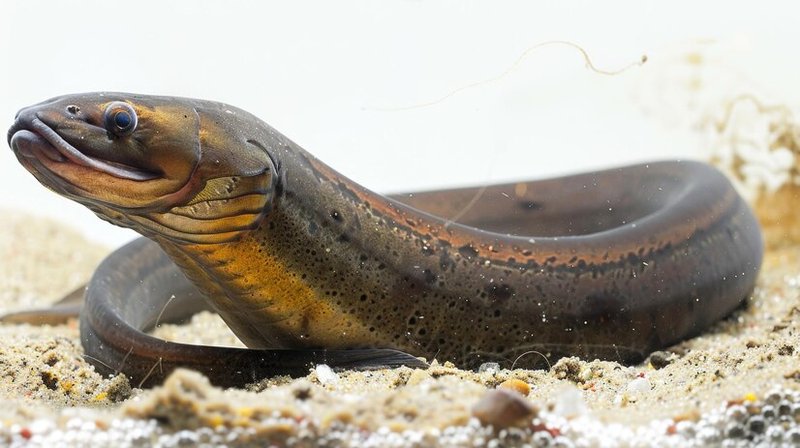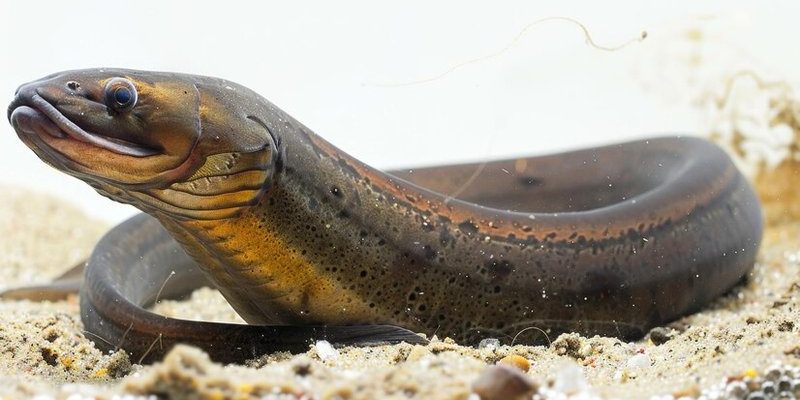
You might be wondering, what exactly does a vinegar eel need in its habitat? Well, the answer is a bit more intricate than just saying “vinegar.” Let’s take a dive into their world and explore the specific preferences that make up their ideal environment. From temperature to pH levels, these eels have some pretty particular tastes. Buckle up; it’s going to be an eye-opening journey!
What Are Vinegar Eels?
Before we get into their habitat preferences, let’s quickly define vinegar eels. These tiny, elongated worms can measure up to 1 inch long, and they’re usually transparent or slightly milky in color. Vinegar eels can be seen swimming in the liquid, often moving in a “s” pattern. They’re commonly found in fermented substances like apple cider vinegar, but they also inhabit other vinegar types.
Interestingly, vinegar eels are harmless to humans. They feed on bacteria and yeasts within the fermentation process, making them important players in the ecosystem of fermentation. So, in a way, they contribute to creating the delicious tangy vinegar we enjoy in our salads and marinades.
Temperature Preferences
One of the most significant factors influencing the habitat of vinegar eels is temperature. These little guys thrive in warmer environments, typically preferring temperatures between 20°C and 30°C (68°F to 86°F). Here’s why temperature matters:
– Reproduction: Warmer temperatures speed up their reproductive cycles, allowing them to multiply quickly in ideal conditions.
– Metabolism: Just like us, temperature affects their metabolism. At optimal temperatures, vinegar eels are more active and can search for food more efficiently.
If you ever decide to culture vinegar eels at home, be sure to keep the temperature controlled. Too cold, and they could become sluggish and less productive. Too hot, and the vinegar might lose its appeal to them, making it an inhospitable environment.
pH Levels and Acidity
Vinegar eels are named for their primary habitat—vinegar! This leads us to another essential aspect of their habitat preferences: pH levels. These eels thrive in acidic environments, typically preferring a pH around 2.5 to 3.5. This level of acidity not only provides food sources but also helps keep predators at bay. Here’s what’s happening behind the scenes:
– Food Source: In high-acid environments, bacteria and yeasts flourish, providing the vinegar eels with a continuous food supply.
– Predator Evasion: Many other organisms can’t survive in such acidic conditions, so the vinegar eels find themselves in a largely predator-free zone.
If you’re curious about creating a habitat for these fascinating creatures, testing the pH of your vinegar or fermentation medium is crucial. You want to ensure it stays within that sweet spot.
Oxygen Levels
Believe it or not, vinegar eels also have specific oxygen requirements. These nimble swimmers prefer environments that have adequate oxygen levels. Here’s how it works:
– Aerobic Conditions: Vinegar eels are aerobic organisms, meaning they rely on oxygen for their metabolic processes. They thrive in environments where oxygen is readily available, allowing them to be active and reproduce.
– Movement: In oxygen-rich environments, you’ll often notice that vinegar eels swim more energetically. If the water becomes stagnant or lacks oxygen, their activity levels drop significantly.
So, whether in a bottle of homemade vinegar or a wild fermentation setup, make sure there’s enough oxygen circulating. This will keep your vinegar eels happy and healthy.
Food Sources and Habitat
As we mentioned earlier, vinegar eels feed mainly on bacteria and yeasts. This dietary preference plays a crucial role in determining their habitat. Here’s what you need to know:
– Fermenting Substances: Vinegar eels are often found in fermenting fruits or vegetables, where the bacterial populations are thriving. Think of apple cider or even kombucha—these environments promote the growth of not just the eels, but also their food sources.
– Sustained Environment: For vinegar eels to flourish, their habitat should contain an ongoing source of fermentation. Once the fermentation process slows down, their population can dwindle as food becomes scarce.
If you’re ever nurturing vinegar eels, consider keeping your fermentation process going strong. Regularly adding sugar or organic material can help maintain a healthy population of bacteria, ensuring the eels have enough to munch on.
Light Conditions
You might not think about it much, but light levels can also impact vinegar eel habitats. Generally, these eels prefer low-light environments. Here’s why:
– Protection from Predators: In their natural habitats, vinegar eels have a better chance of evading predators in darker conditions. Excessive light can attract various organisms that might prey on them.
– Movement Control: While they’re not strictly light-sensitive, vinegar eels tend to be more active in lower light, allowing them to navigate their environment without the fear of being spotted.
So, if you’re culturing vinegar eels, consider keeping them in a dimly lit area or using opaque containers to shield them from harsh light.
Common Habitats for Vinegar Eels
Vinegar eels can be found in various habitats, but they mostly prefer environments rich in organic material. Here are a few of their common haunts:
– Apple Cider Vinegar: As the name suggests, this is a prime location for vinegar eels. The sugars from the apples ferment and create a rich ecosystem for these tiny creatures.
– Kombucha: This fermented tea is another favorite hotspot. The sugar and yeast content creates a stable environment for vinegar eels to thrive.
– Pickled Vegetables: You can also find vinegar eels in jars of pickled vegetables. The vinegar used in the pickling process provides the right acidity and bacterial environment.
By understanding the environments where vinegar eels thrive, you can better appreciate their role in the ecosystem and even manage your own vinegar cultures more effectively.
In summary, the habitat preferences of vinegar eels are quite fascinating and specific. They thrive in warmer temperatures, acidic environments, and places rich in organic material. By knowing these preferences, whether for academic purposes or personal cultivation, you can create a healthy environment for these intriguing creatures.
So, the next time you pour a splash of vinegar into your salad dressing, take a moment to appreciate the tiny vinegar eels that might be swirling around within. They’re not just living in the liquid; they’re playing an essential role in the fermentation process that brings flavor to our lives. Happy exploring!

